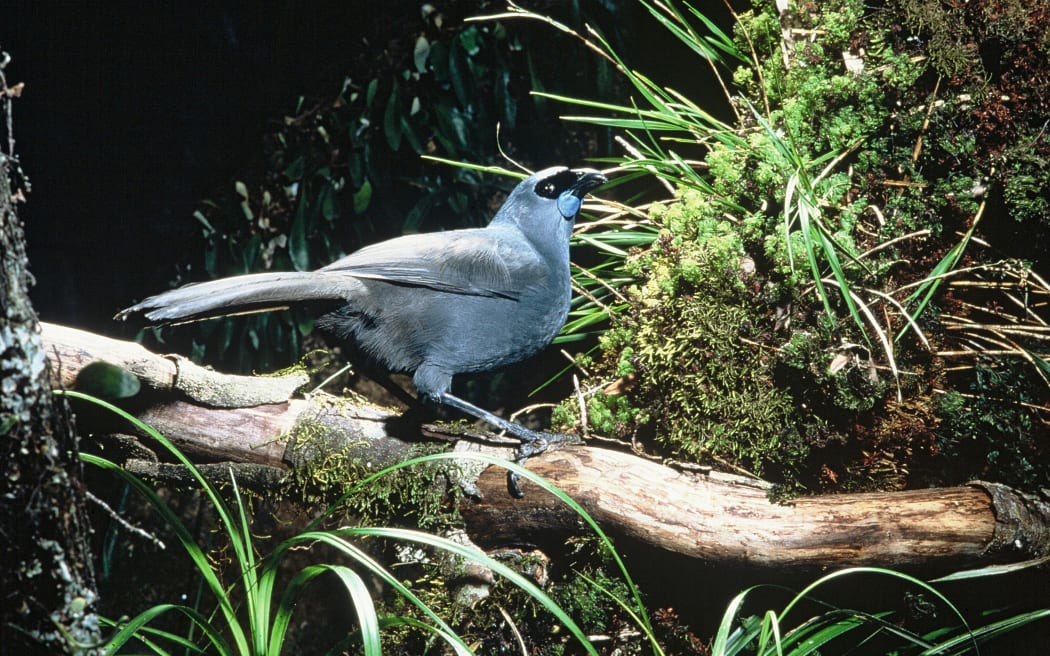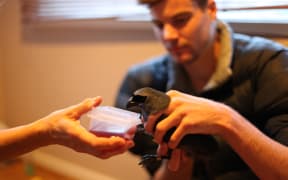Auckland's mainland kokako population is at risk of decimation because of a rat invasion.

A North Island kokako. Photo: DOC
Warm weather has seen pest numbers skyrocket in the Hunua Ranges in recent months - and that puts the native and endangered kokako at severe risk.
There are about 30 breeding pairs of kokako in the Hunua Ranges, and less than 800 pairs nationwide.
But warm weather has meant that fruit on the trees and plants in the ranges has grown rapidly - attracting rats, stoats and possums.
In July there were six times as many rats in the pest-controlled section of the ranges than there were supposed to be.
Auckland Council ecologist, Su Sinclair, said that was because warm weather since summer had seen fruit on the forests' trees, but it had also enabled rats to breed year round.
Rats are a big threat to kokako because they take the eggs and chicks.
They also attract bigger pests like possums and stoats which target the female kokako when they are nesting.
The council's bio-diversity manager Rachel Kelleher said baiting was also troublesome, because it improved the forest canopy. That meant that fruit was more likely to grow, and therefore attract predators.
Finding out how bad the problem was in July though meant the council was able to start baiting early, before the birds start breeding over summer, she said.
Rachel Kelleher said that was important in reaching the council's goal of having 50 breeding pairs in the Hunua Ranges by 2020.
The Hunua Ranges is the kokako's only original habitat still in Auckland.
Trans-location projects have seen some kokako and eggs transferred to islands in the Hauraki Gulf, but the ranges, which lie between Auckland and Waikato, remain the only mainland site.
Since those high rat survey results were recorded in July, the council has stepped up its baiting programme, in the hope of killing off the rats before the kokako breeding season begins in summer.
Kokako facts
- In 2011, there was just 780 pairs of kokako left.
- Kokako are endemic to New Zealand and feature on the $50 note.
- The species is not very good at flying- they mostly leap and run through the forests.
- The North Island kokako has blue wattles and the South Island has orange or yellow. It is assumed that South Island kokako are extinct, although it is possible they may survive in remote parts of South Island and Stewart Island.
- Only 8 percent of kokako nests succeed if predators are not controlled.
- The main threats to kokako are habitat loss and predators like rats, stoats and possums.


